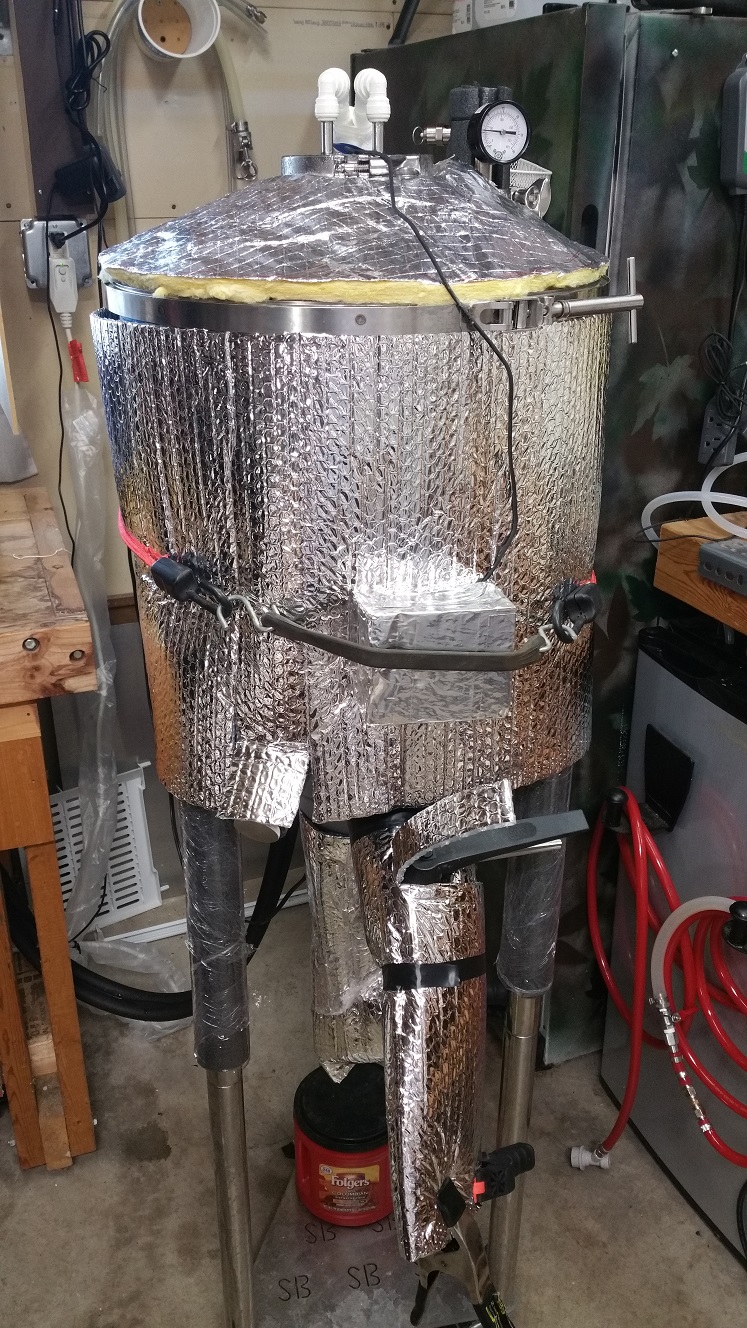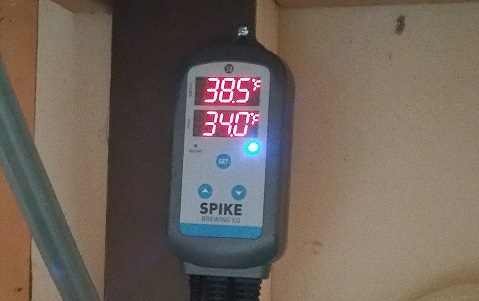First time using this system. 7-gallon SSB Unitank with the 3/8 hp glycol chiller, FTSs, short lines with the insulating sleeve installed (short distances at either end are exposed to ambient), 5 gallons of APA with some dry-hops, ambient is 70 F, assuming a crashing temperature of 33 F.
The first time I tried I think I iced the coil, so I shut it down and let everything come back to room temperature for a day and tried again.
This time I set the glycol chiller to 40 F thinking there would be no way, even if it ran continuously for several hours, that it could ice the coil. I brought it down to the upper-40s and then adjusted the chiller down to 35 F. This allowed me to get down to around 42 F so I turned the chiller down to 30 F and got the Unitank down to 39-ish.
Not good enough! No way the coil iced again, or at least I think there is no way...
Checked the thermocouple and realized it was only around half-way in the well (factory 1.5" TC thermowell from SSB) so I shoved it in the well until it bottomed out and it gave me a final reading of 37 and change. A little better, but not the 33 F I expected.
Couple of things I noticed when running this chilling system: There seems to be an air gap in the return line coming out of the top of the Unitank - I can see a large bubble inside the line and the glycol is flowing only at the bottom of that line, not filling it. It is as if there isn't enough pressure in the line to fill it all the way. Glycol is flowing, but I'd expect the return line to be full like the input line. Could this be limiting the chiller system's ability to come down to 33 F? Or is this normal for this system? I checked the pump and it is not blocked.
And another thing is the amount of liquid in the Unitank - is 5 gallons enough to hit the bulk of the coil, or is there a substantial portion of the coil sitting above the liquid level thus the liquid is seeing only a small portion of the cooling coil? Is the fix as easy as increasing the batch size to 6 gallons, or is there an extension kit that would lower the coil into the Unitank a bit to account for lower volumes? Could this be the culprit?
The first time I tried I think I iced the coil, so I shut it down and let everything come back to room temperature for a day and tried again.
This time I set the glycol chiller to 40 F thinking there would be no way, even if it ran continuously for several hours, that it could ice the coil. I brought it down to the upper-40s and then adjusted the chiller down to 35 F. This allowed me to get down to around 42 F so I turned the chiller down to 30 F and got the Unitank down to 39-ish.
Not good enough! No way the coil iced again, or at least I think there is no way...
Checked the thermocouple and realized it was only around half-way in the well (factory 1.5" TC thermowell from SSB) so I shoved it in the well until it bottomed out and it gave me a final reading of 37 and change. A little better, but not the 33 F I expected.
Couple of things I noticed when running this chilling system: There seems to be an air gap in the return line coming out of the top of the Unitank - I can see a large bubble inside the line and the glycol is flowing only at the bottom of that line, not filling it. It is as if there isn't enough pressure in the line to fill it all the way. Glycol is flowing, but I'd expect the return line to be full like the input line. Could this be limiting the chiller system's ability to come down to 33 F? Or is this normal for this system? I checked the pump and it is not blocked.
And another thing is the amount of liquid in the Unitank - is 5 gallons enough to hit the bulk of the coil, or is there a substantial portion of the coil sitting above the liquid level thus the liquid is seeing only a small portion of the cooling coil? Is the fix as easy as increasing the batch size to 6 gallons, or is there an extension kit that would lower the coil into the Unitank a bit to account for lower volumes? Could this be the culprit?





